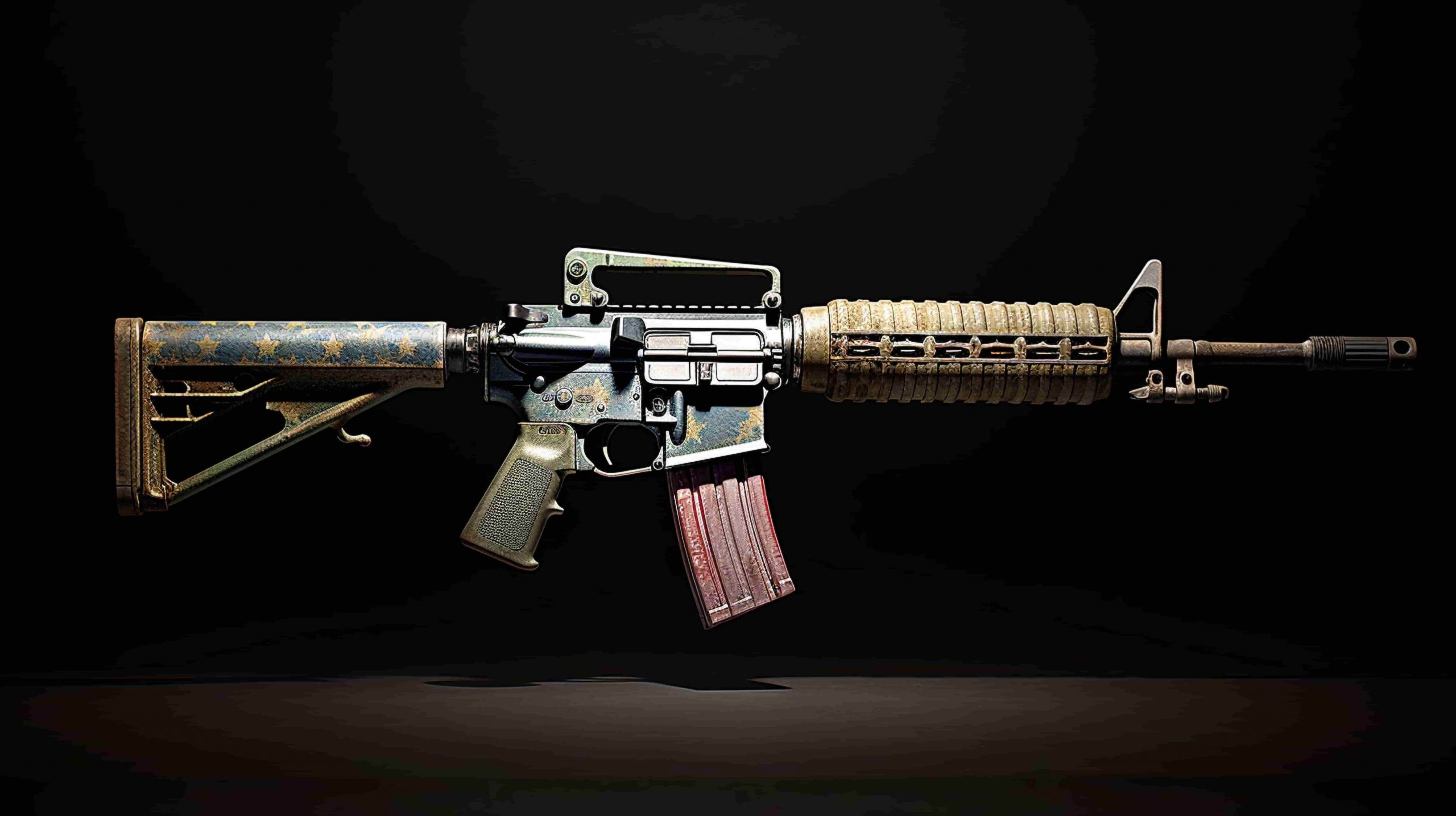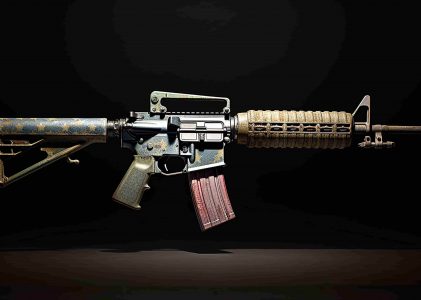In the tapestry of warfare, military rifles have woven threads of technological innovation and battlefield transformation. From the clumsy matchlocks of the 16th century to today’s precision-engineered rifles, these weapons have been pivotal in shaping conflicts and, by extension, the world as we know it. For history buffs, gun enthusiasts, and fans of military technology, understanding the evolution of military rifles offers not just a glimpse into the past but insights into the ongoing advancement of weaponry and its implications for future warfare.
Navigating Early Weaponry
To truly appreciate the modern military rifle, one must first look back at its humble beginnings. The earliest rifles, appearing in the late Middle Ages, were rudimentary and unreliable, yet revolutionary in their own right. The matchlock rifle, introduced in the 15th century, marked the first time soldiers could fire a gun without a lit match held to the touch hole. This advancement, albeit slow and cumbersome, allowed for greater precision and control.
The matchlock’s successor, the flintlock, brought about a significant leap in firearm design. Emerging in the early 17th century, flintlocks used a piece of flint to strike a spark, igniting the gunpowder. This mechanism allowed for faster firing rates and more reliable performance, setting the stage for the flintlock’s use in both military and civilian contexts. Flintlocks dominated the battlefield for nearly two centuries, playing crucial roles in conflicts such as the English Civil War and the American Revolution.
While these early rifles were groundbreaking, they were far from perfect. Reloading was a laborious process, often taking up to a minute per shot. Despite this, the introduction of rifling—grooves inside the barrel that imparted a spin to the bullet—increased accuracy significantly. Thus, these early rifles laid the groundwork for the technological marvels that would follow in the 19th and 20th centuries.
The Industrial Revolution’s Impact
The Industrial Revolution, with its sweeping changes in manufacturing processes, was a catalyst for the evolution of military rifles. This period saw the transition from handcrafted, individually made rifles to mass-produced firearms with interchangeable parts. Such advances dramatically increased the availability and standardization of military weaponry.
One of the most significant innovations of this era was the development of breech-loading rifles. Unlike their muzzle-loading predecessors, breech-loaders allowed soldiers to reload from the rear of the barrel, a much faster and more efficient process. The Prussian Dreyse needle gun, introduced in the 1840s, was the first successful breech-loading rifle, providing a significant advantage during the Austro-Prussian War.
The subsequent introduction of magazine-fed rifles further transformed military tactics. The magazine allowed multiple rounds to be loaded at once, enabling rapid-fire capabilities that were previously unimaginable. Rifles such as the British Lee-Enfield and the American Springfield became staples in military arsenals worldwide, offering unprecedented firepower and reliability.
These technological advancements not only altered the design and functionality of rifles but also transformed infantry tactics and battlefield strategy. The increased rate of fire and accuracy of these rifles forced military leaders to reconsider traditional formations and tactics, leading to the development of new strategies that prioritized mobility and cover.
Rifles in Major Conflicts
Military rifles have played decisive roles in the outcomes of major conflicts throughout history. During the American Civil War, rifled muskets such as the Springfield Model 1861 were instrumental in shaping the tactics and strategies of both Union and Confederate forces. The improved range and accuracy of these rifles contributed to the high casualty rates seen in battles such as Gettysburg and Antietam.
World War I witnessed the widespread use of bolt-action rifles like the Mauser Gewehr 98 and the Lee-Enfield SMLE. These rifles were renowned for their reliability and precision, features that were crucial in the trench warfare that characterized much of the conflict. The ability to engage targets at long range was invaluable in the static and grueling environment of the Western Front.
World War II saw the introduction of semi-automatic rifles, which offered a significant increase in firepower over bolt-action models. The American M1 Garand, famously described by General George S. Patton as “the greatest battle implement ever devised,” provided U.S. forces with a distinct advantage in terms of rate of fire. Meanwhile, the German Sturmgewehr 44, considered the first modern assault rifle, combined the automatic fire capability of a machine gun with the accuracy of a rifle, setting a precedent for future designs.
From Post-WWII to Present Day
The post-World War II era continued to witness rapid advancements in rifle technology. The development of semi-automatic and automatic rifles transformed military arsenals and doctrines. The Cold War period saw the emergence of iconic rifles such as the Soviet AK-47 and the American M16, both of which became symbols of their respective military ideologies.
The AK-47, designed by Mikhail Kalashnikov, is renowned for its simplicity, durability, and reliability under harsh conditions. Its widespread adoption by communist and non-aligned nations cemented its status as one of the most significant rifles of the 20th century. Conversely, the M16, with its lightweight construction and high-velocity round, became the standard issue rifle for U.S. forces during the Vietnam War and beyond.
In the present day, military rifles continue to evolve, incorporating cutting-edge materials, optics, and modularity. Modern rifles like the FN SCAR and the HK416 offer enhanced accuracy, ergonomics, and adaptability, making them versatile tools for contemporary warfare and peacekeeping operations.
Glimpsing the Future of Military Rifles
As technology advances unabated, the future of military rifles promises even more sophisticated capabilities. Current trends point toward the increased integration of smart technologies, such as advanced optics, targeting systems, and even AI-driven enhancements. These developments aim to further improve accuracy, situational awareness, and overall effectiveness on the battlefield.
The potential for directed-energy weapons, such as lasers, to replace traditional firearms is an exciting prospect for military researchers. While still largely experimental, these weapons hold the promise of silent, precise, and limitless ammunition, revolutionizing warfare as we know it.
Despite the rapid pace of technological change, the fundamental role of the military rifle remains unchanged. It is a tool of both power and precision, central to the strategies and tactics of armed forces worldwide. As we look to the future, the rifle’s continued evolution will undoubtedly shape the landscape of global security and conflict.
In Conclusion
The history and evolution of military rifles is a testament to human ingenuity and the relentless pursuit of progress. From the rudimentary matchlocks of the Middle Ages to the advanced smart rifles of today, these weapons have played pivotal roles in both warfare and technological innovation. For history buffs, gun enthusiasts, and military technology fans, understanding this evolution provides valuable insights into the broader narrative of human conflict and invention.
We invite you to share your thoughts and experiences with military rifles in the comments below. If you’re interested in learning more, explore our related articles on military technology and history. The story of the military rifle is far from over, and we look forward to following its continued evolution in the years to come.

